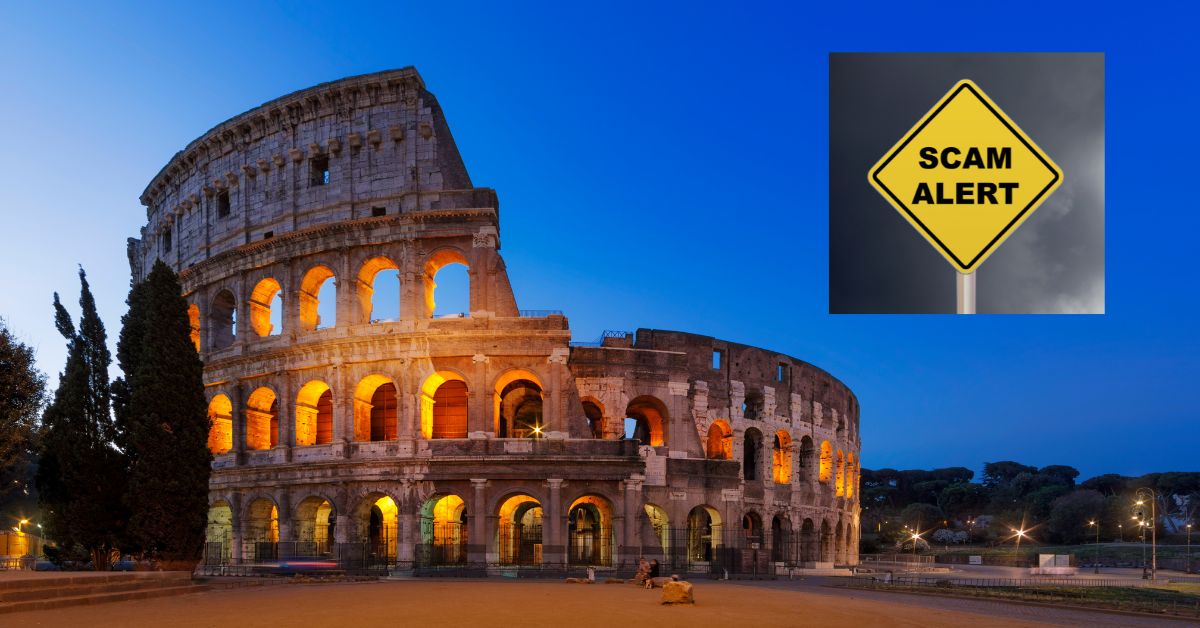Italy is easily my favorite travel destination I mean it’s home to ancient ruins, Renaissance art, mouthwatering cuisine, and breathtaking landscapes. Rome is also my favorite city on earth.
However, like any other popular tourist hotspot, it also attracts scammers looking to take advantage of unsuspecting visitors. And it’s like they are improving their craft every single passing day.
Most Italians are warm, honest, and helpful, but in crowded tourist areas, scams are unfortunately common. The good news? With a little awareness, you can avoid them entirely.
This guide covers the 9 most critical precautions you must take to avoid getting scammed in Italy. Follow these, and you’ll enjoy la dolce vita without losing money, patience, or peace of mind.
1. Always Validate Your Train or Bus Ticket
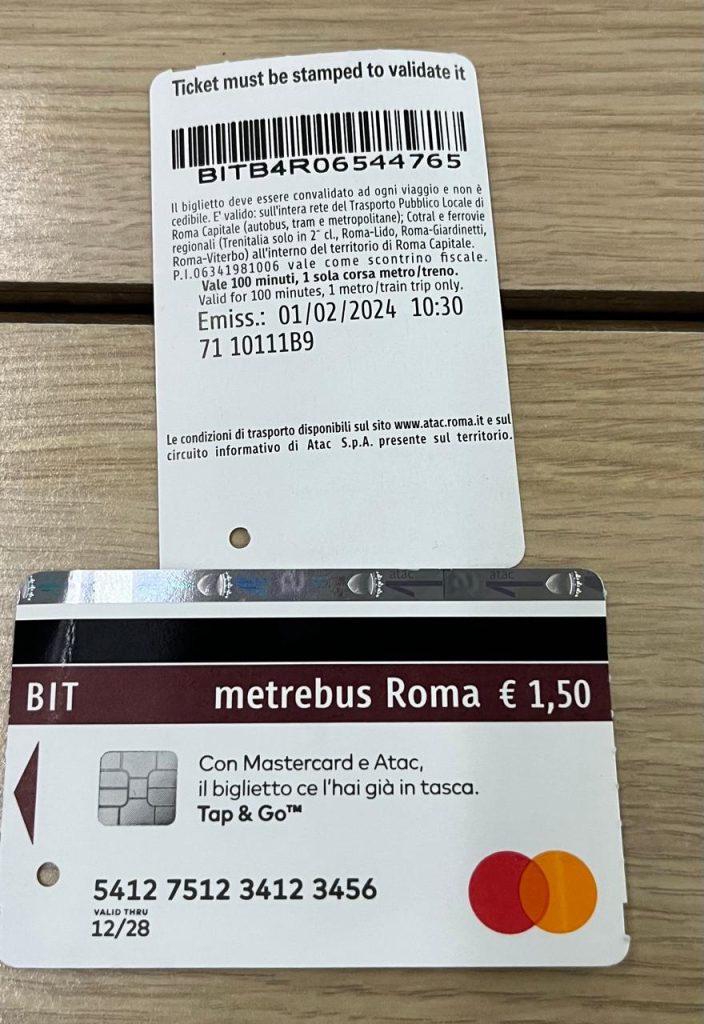
The Scam in Detail
Italy’s public transport system requires passengers to validate tickets before boarding. If you don’t, you risk a steep fine (€50–€200), even if you bought a legitimate ticket.
Scammers sometimes linger near ticket machines, pretending to help but actually sabotaging validation. Some corrupt ticket inspectors may even claim your validated ticket wasn’t stamped properly.
How It Happens
- On trains, you must validate your ticket at the small yellow or green machines before boarding. If you forget, some inspectors will fine you on the spot, even if it’s an honest mistake.
- On buses, validation happens inside the vehicle. If you board without stamping your ticket, drivers may ignore you, but undercover controllers can still fine you.
- In metro systems (Rome, Milan, etc.), tickets are usually validated at entry gates, but scammers sometimes jump in behind you, making it look like you didn’t pay.
A friend of mine once boarded a regional train near Florence without validating his ticket. An inspector fined him and his lady €100 on the spot—no warnings, no sympathy. When he argued, the inspector threatened to call the police. Lesson learned: Always validate, no exceptions.
How to Avoid It
- For trains: Insert your ticket into the validation machine at the station before boarding.
- For buses: Validate inside the bus using the electronic stamping machine. The machine is located at the back of the bus. The first time I entered the bus through the front door but before I could secure my suitcases and make my way to the back, 3 inspectors had gotten inside the bus. I parted with a 50-euro fine.
- For metro systems: Tickets are usually validated at entry gates.
- Digital tickets: If you buy online (Trenitalia, Italo, or local transit apps), ensure it’s activated before boarding. Also have a digital copy of the ticket in your phone, or a printed one.
Pro Tip: If an inspector fines you unfairly, ask for their ID and insist on a receipt. Some may back down if they realize you won’t be intimidated.
2. Beware of ‘Friendly’ Strangers Offering Help with ATMs
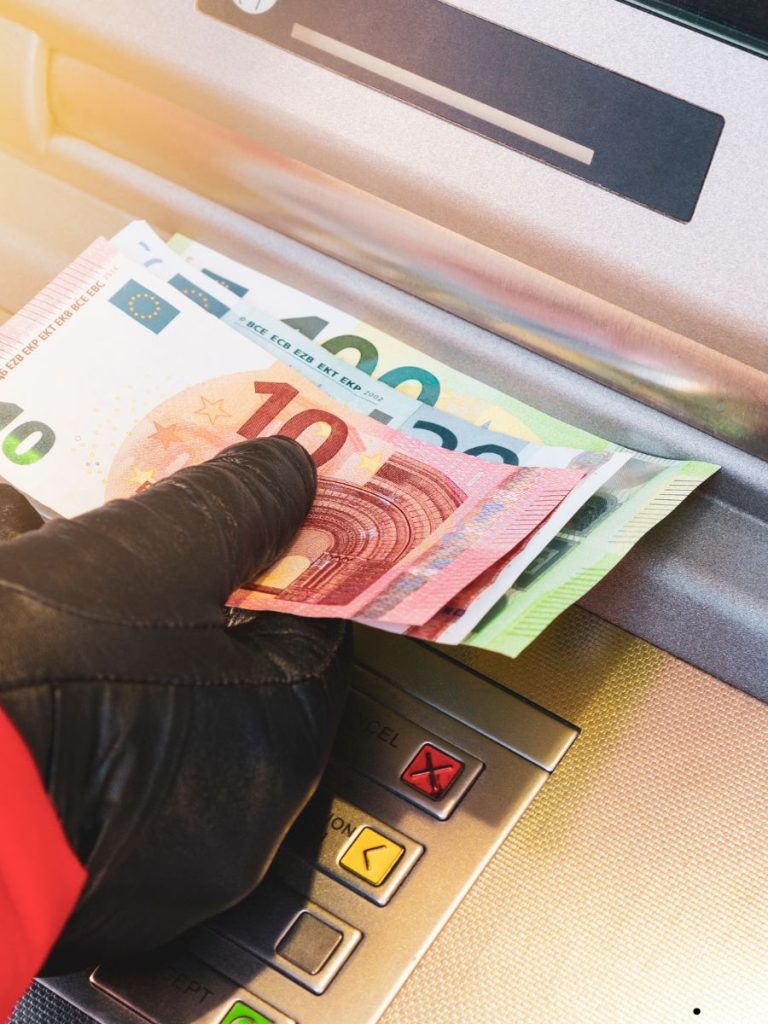
The Scam in Detail
A “helpful” local approaches you at an ATM, offering assistance in English. Meanwhile:
- They distract you while an accomplice steals your cash.
- They install a card skimmer to clone your card.
- They pretend to be a “bank employee” and take your card under false pretenses.
How It Happens
- Distraction scams: Someone drops coins near you, and while you’re distracted, another person steals your card.
- Card skimming: A device is placed over the card slot, recording your details.
- Fake bank officials: They claim your card was “retained for security reasons” and ask for your PIN.
In Rome, I once saw a well-dressed man “helping” a tourist at an ATM near Termini Station. He was pointing at the screen, saying, “Press this button,” while his hand hovered near the cash slot. The tourist walked away, but I later saw the same man whispering to another accomplice nearby.
How to Avoid It
- Only use ATMs inside banks (avoid standalone street ATMs).
- Cover your PIN with your hand.
- Never accept help—even if they claim the machine is “broken.”
- If your card is swallowed, call your bank immediately—some scammers rig machines to retain cards.
Red Flag: Anyone lingering near an ATM, especially if they’re overly friendly.
3. Don’t Accept ‘Free’ Bracelets or Rosemary in Tourist Areas

The Scam in Detail
Near major landmarks (Rome’s Colosseum, Florence’s Duomo, Venice’s Rialto), scammers approach with:
- “Free” friendship bracelets – They tie one on your wrist, then demand payment (€10–€50).
- “Lucky” rosemary sprigs – They hand it to you, then aggressively ask for money.
- “Petitions” for the deaf – A clipboard is shoved in your face while pickpockets strike.
How It Happens
- Group tactics: One person distracts you while another picks your pocket. Like when signing the “petition for the deaf”, you concentration will be on the paper and that is when they strike.
- Aggressive demands: They’ll follow you, shouting until you pay. If you agree to receive a free bracelet, they become very aggressive prompting you to pay for a something you didn’t even want.
- Fake “gifts”: They claim it’s a “tradition” or “for good luck,” but it’s just a trap. Sometimes they just guilt-trip into paying. However, if you stand your ground and threaten to call the authorities, they will scatter.
At the Trevi Fountain, a man handed my friend a “lucky coin.” When she took it, he demanded €20. When she refused, he started yelling, drawing a crowd. A nearby police officer finally shooed him away, but the experience was unsettling.
How to Avoid It
- Say “NO” firmly and keep walking. Don’t slow down or engage.
- Keep your hands in your pockets to avoid unwanted items being forced on you.
- If they grab your wrist, pull away forcefully—they rely on intimidation.
Real-Life Example: Many tourists report being surrounded by multiple scammers until they pay up. Don’t fall for it!
4. Avoid Restaurants with No Clear Prices or ‘Tourist Menus’

The Scam in Painful Detail
Picture this: You’re wandering the charming streets near Piazza Navona when a charismatic waiter beckons you inside his “authentic” trattoria. The pasta smells divine, the wine list looks impressive, and the prices seem reasonable… until the bill comes. Suddenly there’s a €15 “cover charge” per person, a €10 “service fee,” and your €12 pasta has magically become €22.
This is the menu switcheroo – one of Italy’s oldest restaurant scams. Here’s how it plays out:
- The Bait: They lure you in with reasonable displayed prices or “special tourist menus”
- The Switch: You’re given a different menu without prices (or with microscopic print)
- The Trap: They rush you into ordering before you notice
- The Sting: The bill arrives with hidden charges like:
- Coperto (cover charge) – legit but often inflated
- Pane e coperto (bread you didn’t ask for)
- Servizio (service charge) – should only be 10-15%
- “Special ingredient” surcharges
A Personal Horror Story
Last spring in Venice, my wife and I made the rookie mistake of dining at a canalside restaurant near Rialto without checking reviews. Our €60 meal became €180 because:
- The “complimentary” antipasto wasn’t complimentary (€25)
- The liter of house wine we ordered was charged as “premium reserve” (€40 vs €15)
- They added a 20% “tourist tax” not mentioned anywhere
My problem is that I don’t like protesting especially in a restaurant as I don’t want to attraction attention. We paid, left, but fasted for the next 24 hours. We however made sure to leave a scathing review online.
How to Eat Like a Local
Look for these signs of legitimacy:
- Menu displayed outside WITH prices
- No aggressive touts pulling you in
- Italian customers (if locals avoid it, you should too)
- Clear indication of coperto (should be €2-5 max)
Red flags to walk away from:
- “Special tourist menu” with no prices
- Waiters blocking the menu display
- Prices in only one currency (real Italian menus list euros)
- No prices for seafood (“market price” often means “whatever we think we can get”)
Pro tip: Use the Fork app (like Italian OpenTable) for verified restaurants with reviews.
5. Watch Out for Taxi Overcharging (Especially at Airports & Train Stations)
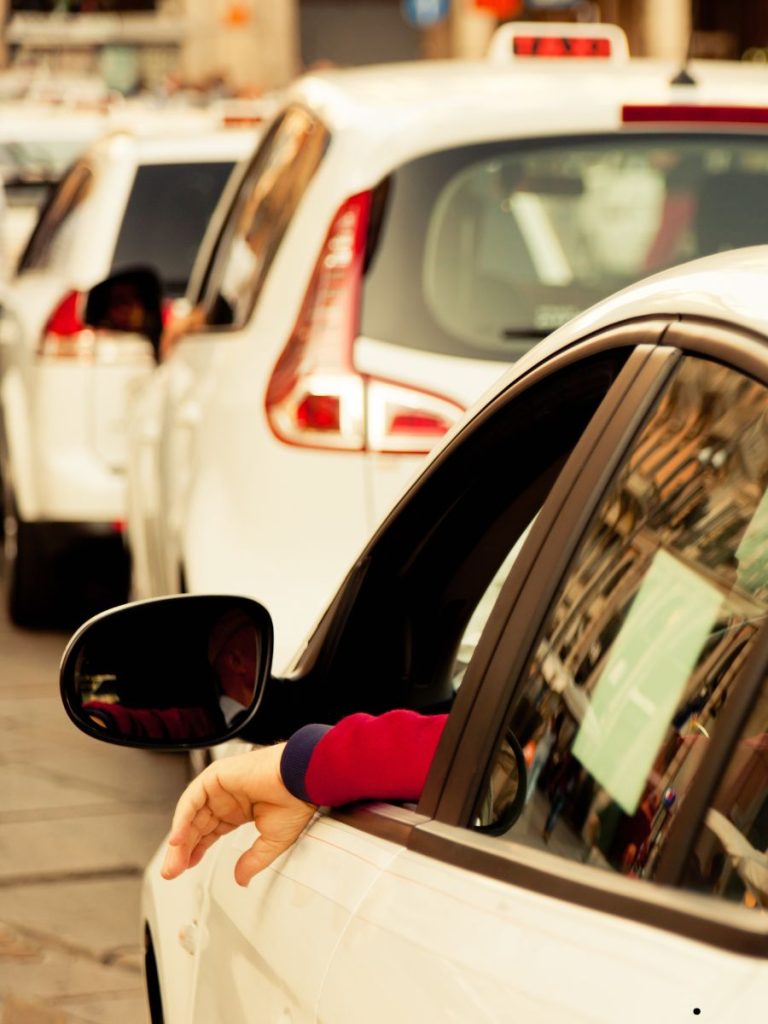
Anatomy of a Taxi Scam
Whenever in Italy, I always avoid using taxis. I book accomodations in areas with good trains and bus connections. Italian taxis are generally honest, but the bad ones have perfected these schemes:
1. The “Broken Meter” Routine
Driver claims the meter isn’t working and quotes a flat €80 for what should be a €30 ride.
2. The Scenic Route
Takes the longest possible way while you’re distracted by the views.
3. The Fake Surcharge
Adds mysterious “night fees” or “luggage fees” that don’t exist.
4. The Counterfeit Cash Swap
Gives you fake €50 notes as change from your €100 bill.
A Friend’s Roman Holiday Nightmare
Arriving jetlagged at Fiumicino Airport, he fell for the oldest trick: taking an unmarked “taxi” from a guy holding a sign. The:
- €50 fixed fare became €150
- Driver claimed my friend’s €100 bill was “fake” and demanded another
- Threatened to call police when he objected
How to Take Taxis Safely
Only use:
- Official white taxis with “Comune di Roma” (or any other city for that purpose) markings
- Apps like FreeNow (Italy’s Uber alternative)
- Pre-booked transfers from reputable companies
Always:
- Ensure meter is running from start
- Get an estimate before entering
- Have small bills ready to avoid “no change” excuses
Know the real rates:
- Rome: €55 fixed from Fiumicino to city center
- Milan: €90 fixed from Malpensa to Duomo
- Never pay more than €15 for short hops within cities
6. Never Exchange Money with Street Vendors or Shady Exchange Offices
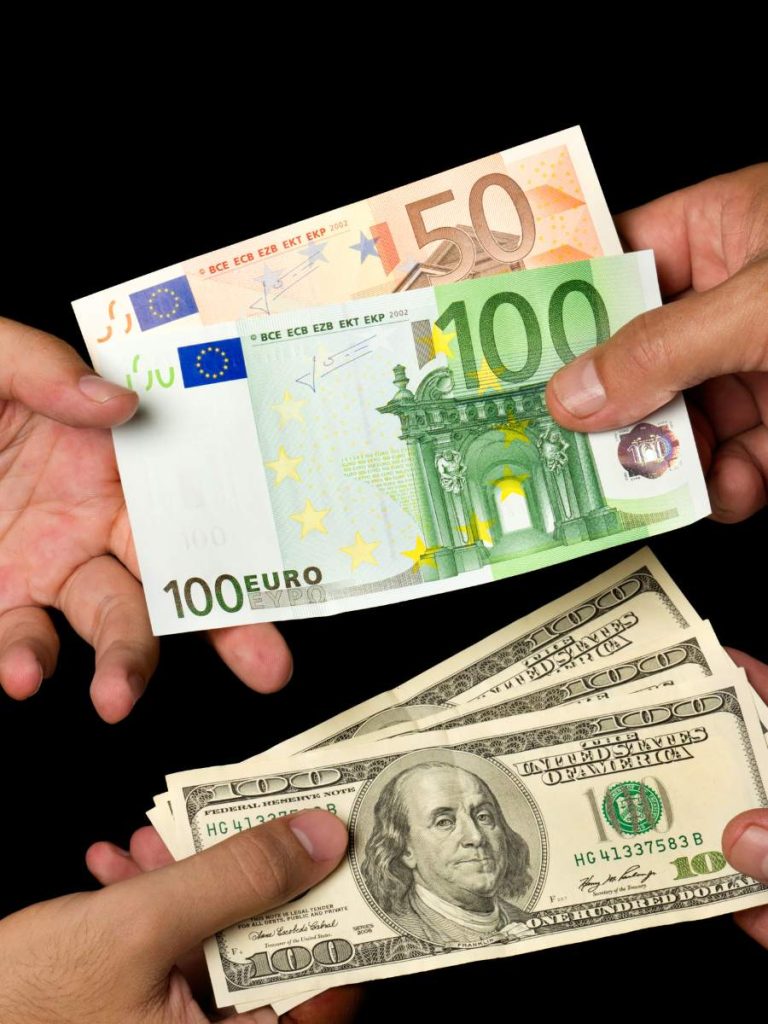
The Currency Con Game
You’ll spot these traps near major attractions:
1. The “No Commission” Lie
Offices advertising “0% commission” make up for it with awful exchange rates (sometimes 20% below market).
2. The Bait-and-Switch
They quote a good rate, then claim “that’s for large amounts” when you hand over cash.
3. The Counterfeit Handoff
You get fake €50 notes mixed in with real bills.
4. The Calculator Trick
They type in a lower amount than agreed using a calculator with sticky buttons.
How to Get Fair Exchange Rates
Best options:
- ATMs (Bancomat) – always choose “without conversion” to avoid dynamic currency conversion fees
- Banks during business hours
- Revolut/Wise cards for best rates
Avoid:
- Exchange offices near train stations/attractions
- Anyone offering to exchange money on the street
- Places with rates more than 3% worse than XE.com
Pro Tip: Always count money before leaving the counter, and check for security features on €50/€100 notes.
7. Be Extra Vigilant Against Pickpockets in Crowded Areas
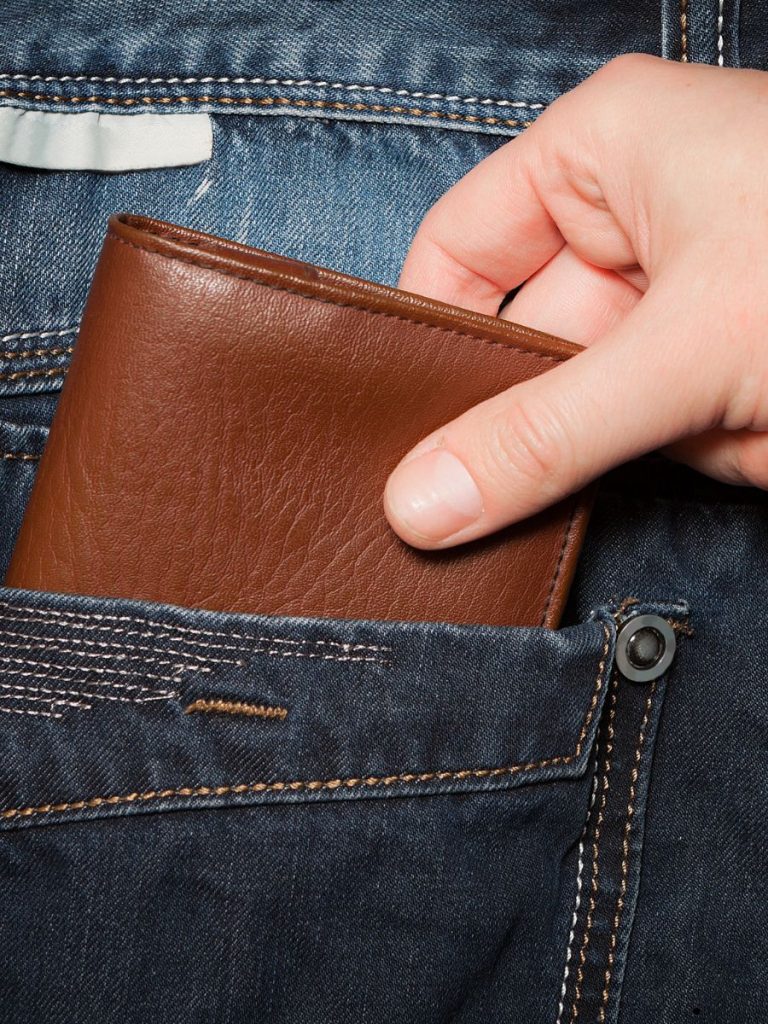
The Art of the Dip: How Pickpockets Operate
Italian pickpockets are among the world’s most skilled, probably second to their cousins in Barcelona or Paris – they’ve perfected their craft over generations. Here’s how they’ll try to relieve you of your valuables:
Common Tactics to Watch For:
- The Distraction Duo
- One person spills something on you or asks for directions
- Their partner lifts your wallet while you’re distracted
- The Metro Crush
- Teams create artificial crowding at subway doors
- Work in groups of 3-4 to surround and pickpocket victims
- The Fake Petition
- Seemingly deaf/mute individuals shove clipboards in your face
- While you’re reading, accomplices go through your bags
- The Slash-and-Grab
- Razor blades used to cut purse straps or backpack bottoms
- Common in Naples and Rome’s Termini station
Hotspot Locations (Where I’ve Seen It Happen):
- Rome:
- Metro Line A (especially near Spanish Steps)
- Trevi Fountain at dusk
- 64 Bus (the “pickpocket express” to Vatican City)
- Florence:
- Ponte Vecchio crowds
- San Lorenzo Market
- Venice:
- Vaporetto (water bus) lines 1 and 2
- Rialto Bridge at peak hours
Personal Close Call in Florence
Last spring, I witnessed a textbook distraction theft at Santa Maria Novella station. A woman “accidentally” dropped her shopping bag in front of me while her partner moved behind an elderly tourist. Within seconds, they’d unzipped his fanny pack and disappeared into the crowd. The whole operation took less than 10 seconds.
Anti-Theft Essentials:
- Wear crossbody bags with zippers (never backpacks in crowds)
- Use a money belt for passports/extra cash
- Divide your money (only carry what you need for the day)
- Be extra cautious when someone creates a distraction
8. Don’t Fall for Fake Tickets or Skip-the-Line Scams
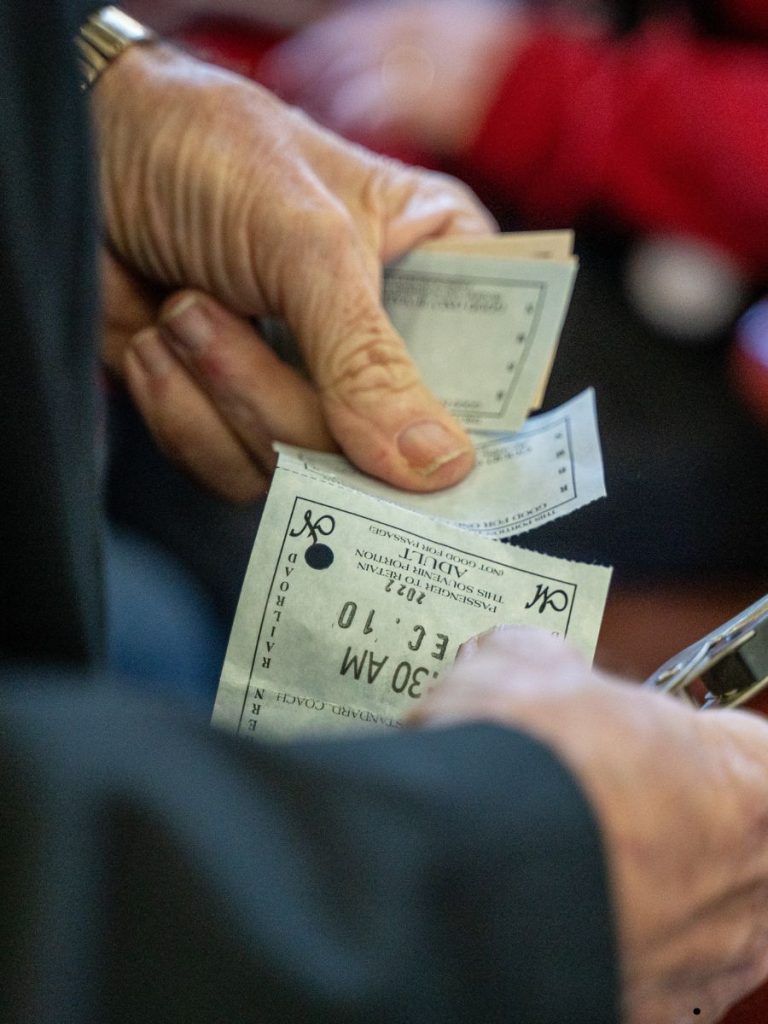
The Ticket Scam Breakdown
These cons typically happen near major attractions:
1. The “Official Guide” Imposter
- Well-dressed individuals with fake IDs offer “exclusive” tours
- Take your money and disappear before entry
2. The Printed Scam
- Sellers offer authentic-looking tickets that turn out to be:
- Already used
- Counterfeit
- Student tickets (you’ll get stopped at entrance)
3. The Bait-and-Switch Tour
- Advertised as “small group” but become 50-person mobs
- “Skip-the-line” access that still requires waiting
Real Example from the Colosseum
A traveler I interacted at the hotel lobby paid €80 for what was promised as a “private underground tour” from a seller outside the metro station. The “guide” collected money from 15 people, then told everyone to wait while he got the tickets… and never returned.
How to Buy Tickets Safely:
Only purchase from:
- Official museum websites
- Authorized resellers like GetYourGuide or Tiqets
- Hotel concierges at reputable establishments
Red flags:
- Sellers approaching you near attractions
- Prices significantly lower than official rates
- Vague descriptions of what’s included
Pro tip: Many major Italian museums release tickets exactly 30 days in advance – set a calendar reminder!
9. Ignore Street Gambling Games (Three-Card Monte, Shell Game)
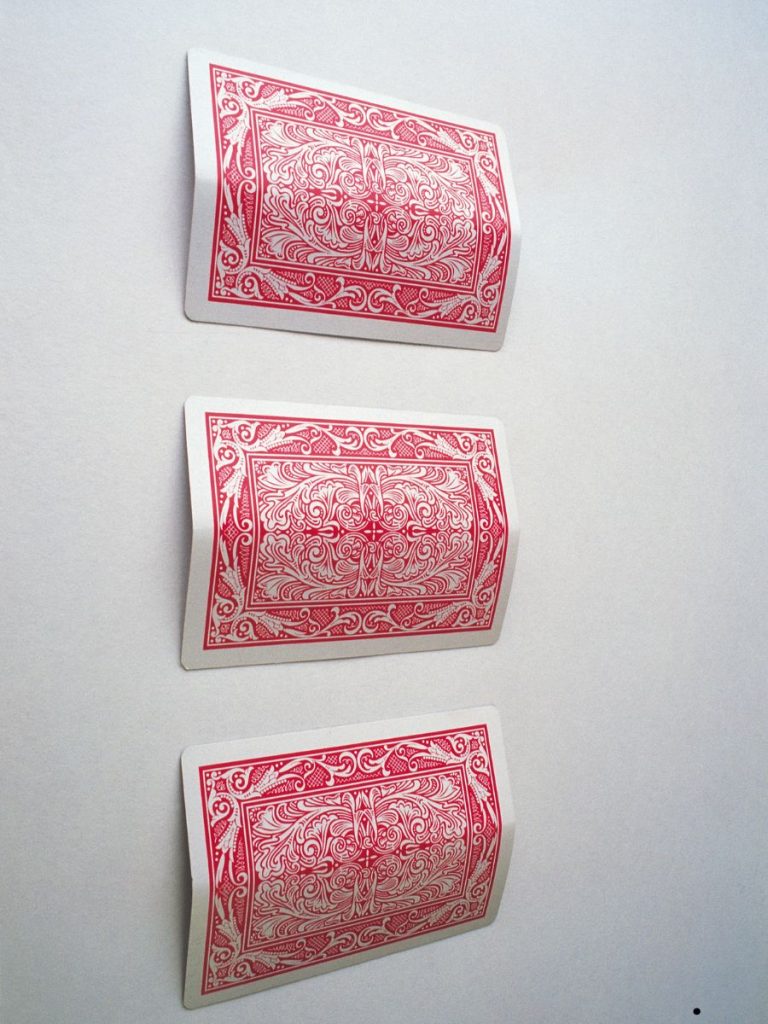
Why These Games Are Always Rigged
These cons usually appear in:
- Rome’s Piazza Venezia
- Naples’ Piazza Garibaldi
- Milan’s Central Station
- Florence’s Piazzale Michelangelo
How the scam works:
- A dealer sets up a simple game (find the ball under cups, follow the queen card)
- Shills in the crowd “win” repeatedly to build excitement
- When a tourist plays:
- The dealer uses sleight of hand
- Accomplices may pickpocket you while you’re focused
- If you somehow win, they refuse to pay or become aggressive
A Lesson Learned in Naples
I once watched a shell game for 20 minutes near Galleria Umberto. The “winner” was clearly part of the team – he’d signal the dealer with subtle hand gestures. When a tourist finally played and correctly guessed the cup, the dealer suddenly “noticed police” and the whole operation packed up instantly.
How to Respond:
- Don’t make eye contact with dealers
- Keep walking if approached
- Never touch the money they wave around (some will claim you agreed to play by touching it)
- Film discreetly if you want to observe (but be prepared for aggression)
Bonus: Essential Italian Phrases to Thwart Scammers
Learn these key phrases to shut down scammers quickly:
- “No, grazie. Non sono interessato.”
(No thank you, I’m not interested) – More forceful than just “no” - “Chiamo la polizia!”
(I’ll call the police!) – Often makes them scatter - “Questo è illegale!”
(This is illegal!) – Call out their behavior - “Lasciami in pace o urlerò!”
(Leave me alone or I’ll scream!) – For aggressive panhandlers
Final Thoughts: Staying Safe Without Paranoia
After years of traveling Italy, I’ve learned that most scams follow predictable patterns. The key is to:
- Stay aware but not fearful – Most Italians are wonderfully helpful
- Trust your instincts – If something feels off, it probably is
- Prepare in advance – Book tickets, research routes, and know common scams
Remember: Scammers target distracted, uncertain tourists. By walking confidently, making eye contact, and following these tips, you’ll enjoy Italy’s incredible culture without becoming a victim.
Now go enjoy that gelato – you’ve earned it!

